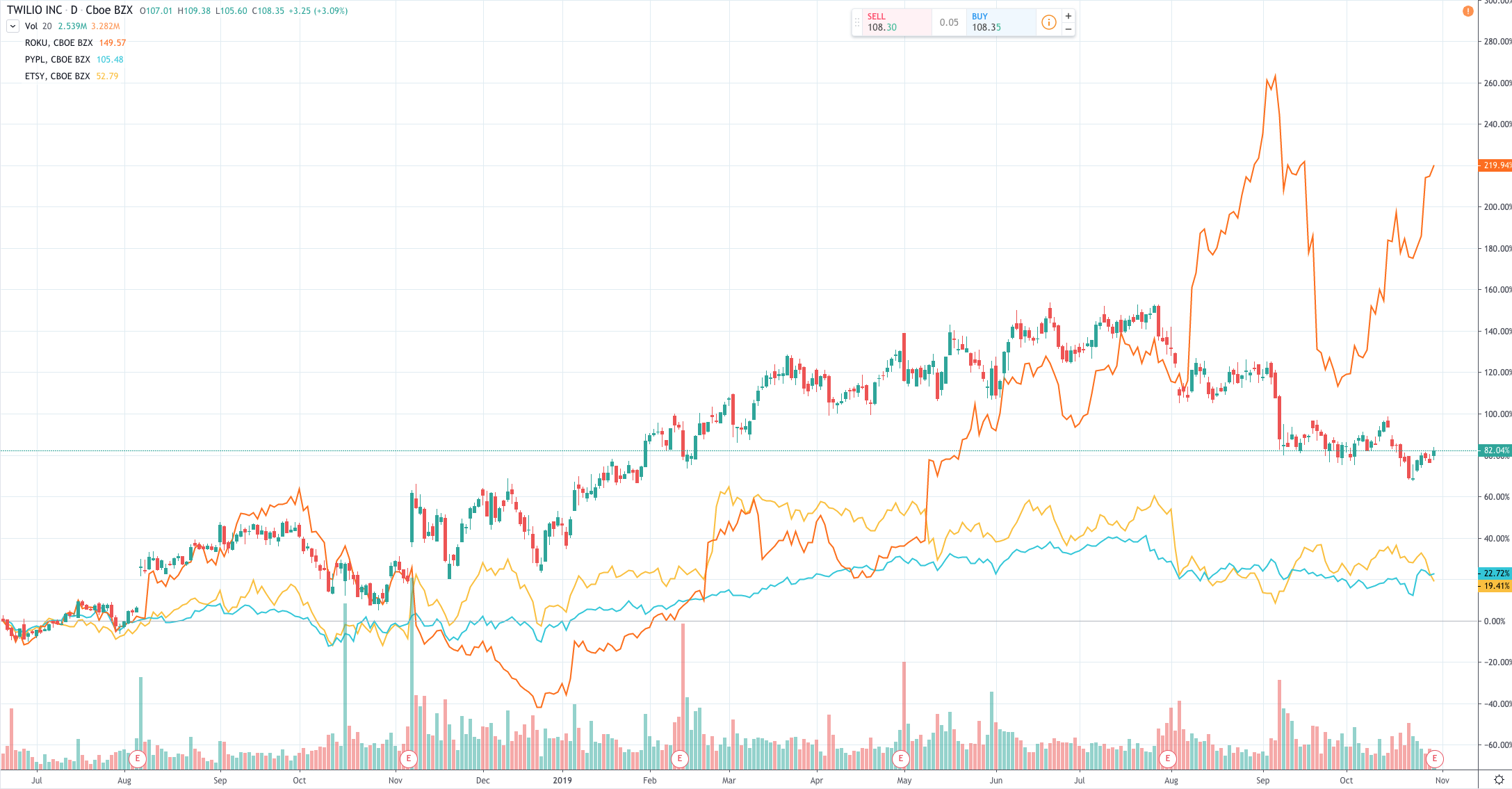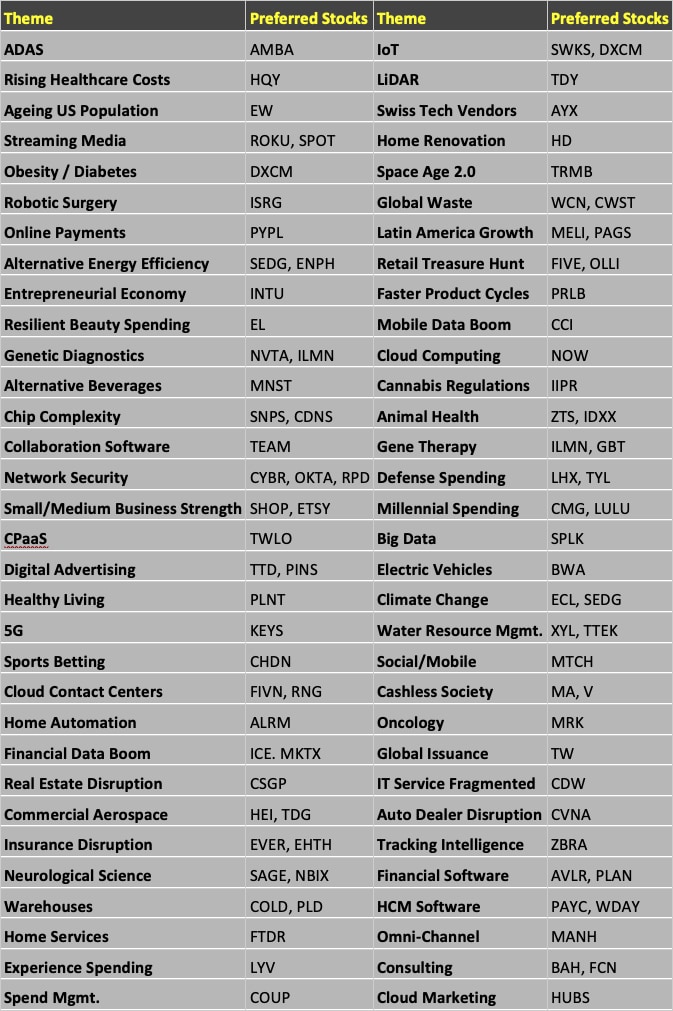We are in an era where the proliferation of data has seen explosive growth and is now being deemed the most valuable asset on the planet.
As a result of the growth, analytics is making huge strides. With there being more data collected than ever could be crunched, analytics has helped achieve the goal of providing a better outcome on decisions.
This is apparent in markets where everyday investors now have access to an unprecedented amount of data, however, most do not know how to convert that data into a positive value contributor and instead fall into the trap of information overload.
There are more than 2000 stocks based in the US with market caps above $500m that trade more than 100,000 shares a day.
While there is evidently a lot of choices, many of us prefer to keep portfolio holdings under 30, so understanding how to narrow down these names in a modest turnover portfolio is a very important question to address.
2000
Number of US based stocks with market caps above $500m
A three-pronged approach to considering your next trade
From a broad perspective, the majority of stocks on any timeframe move fairly correlated with broader markets, which in turn are mostly driven by macroeconomic influences.
This is the type of top-level thinking that traders should be doing before making an investment. Because you want to be on the right side when the overall market moves assessing current breadth, sentiment, technical analysis and the reward/risk on valuation measures all play a role into finding the optimal entry and exit points.
The next level of thinking is at the sector and industry level where there can be certain factors in play that allow groups of stocks to deviate from broader market moves.
The price movements at this level are mainly driven by institutional flows, which are driven by a variety of factors including but not limited to foreign exchange, interest rates, thematic growth factors, risk-on/off environment, valuations, upcoming catalysts, alternative data as well as many other factors.
You want to be actively in front or at least in tandem with these sector and industry rotations.
“You want to be actively in front or at least in tandem with these sector and industry rotations”
The final level is at the company specific level where stock movements are based on a number of fundamental factors that drive sentiment, which drives technical and flow movement.
At this level, you can really drill down to being selective, utilising relative valuations and growth metrics in an effort to find the best of breed or best in class stocks.
To summarise the above, if you have an internal conversation with yourself before making an investment, it would go as follows:
- Is now a good time to be long in the overall market? What are key levels of the market to be aware of and what is the current reward and/or risk for the expected timeframe of my investment? How does the macro data look? Where are sentiment and breadth readings?
- Which sectors and industries will attract investments from institutions based on the current and forecasted market environment? What companies are in these groups that are the most attractively valued given the company’s growth, management and future potential?
- Which company is most worthy of my investment based on all the metrics? At what level is a good entry point and where is my expected exit point? Can I utilise options for protection and/or additional income opportunities over the expected term of this investment?
That may seem like a timely process at first but if you set up the infrastructure ahead of time it can become a near-instantaneous process. Below is how I accomplish this.
Kunkle’s process for determining the best of breed stocks
The first step I take is narrowing down the large universe of stocks into a best of breed list, which tends to leave me with around 300 to 400 of the top fundamentally positioned names.
I take time to customise my watchlists by determining three themes that sets each list apart to allow for easier comparisons of related companies such as sector-industry-cohort. For example, a company like Neurocrine Biosciences [NBIX] would fall into healthcare-biotech-neurological diseases.
This method also allows you to customise exactly what metrics you want to see when flipping from one group to another, which is important because industry specific metrics play a much larger role in valuating premiums and discounts than the more well-known metrics.
Under any circumstance, I am always looking at a combination of a company’s valuation, growth, profitability, efficiency, cash flows and the health of the balance sheet. Once you have a curated list of stocks, it makes it a lot easier to quickly make decisions and having a handful of names within a similar industry is useful in this scenario.
“Under any circumstance, I am always looking at a combination of a company’s valuation, growth, profitability, efficiency, cash flows and the health of the balance sheet”
The final decision maker can then be a form of technical analysis for which stock offers the best reward or risk ratio in the current environment.
I publish these names in our annual Options HawkMarket Outlook release, but also maintain the list fluidly by tracking earnings season closely and making additions or deletions to fundamental momentum changes, as being able to change your opinion when there is new information is crucial to being a successful investor.

Kunkle’s process for creating a playbook
A more arduous, but equally important, step is developing playbooks on the macro industry level so you can make quick and decisive moves based on the changing macro backdrop.
This can be from a very broad scope such as a playbook for a rising interest rate environment or a weakening consumer environment to the very industry specific.
An example of the latter is when we saw a strong outperformance in oil tanker stocks such as Scorpio [STNG], DHT Holdings [DHT] and others despite oil prices being weak. The spike was solely driven by a continuous surge in freight rates to ship US crude to Asia.
Maintaining an updated database of industry specific news sources and data releases can keep you ahead of the curve.
The goal of the entire process is to be better informed and in a timely manner, which will improve your investment decisions. Knowledge and information is power, and in turn alpha, in the investment industry.
“The goal of the entire process is to be better informed and in a timely manner, which will improve your investment decisions”
Kunkle’s process on staying informed
When it comes to building out a list of sources for information, it requires an incredible amount of time and organization to review and rank these.
Company websites are a good resource for retrieving investment presentations and transcripts from presentations at investment conferences.
Twitter has become a great social media resource that allows you to create lists detailing pertinent news from leading industry sources. I have a list setup for each and every industry.
“Twitter has become a great social media resource that allows you to create lists detailing pertinent news from leading industry sources”
I’ve spent many years building out and refining news resources and at Options Hawk our focus is to make investors better informed and to do the leg work so members can focus on analysing and executing.
Thematic investing, which aims to identify macro-level trends, is also a key influence of my many trades because you want to be long on stocks benefitting from secular tailwinds.
Below is a few that I have been tracking closely over the last few years:

Once you have identified the stocks that fit the right trade at the right time, it is all about executing and managing the trade, a topic ripe for further discussion in the future.
By Joe Kunkle, who is the founder of Options Hawk, a service that provides news, analysis and option movement research. Alongside this, he runs his personal trading account and is head research analyst at investment firm Relativity Capital.
Continue reading for FREE
- Includes free newsletter updates, unsubscribe anytime. Privacy policy






